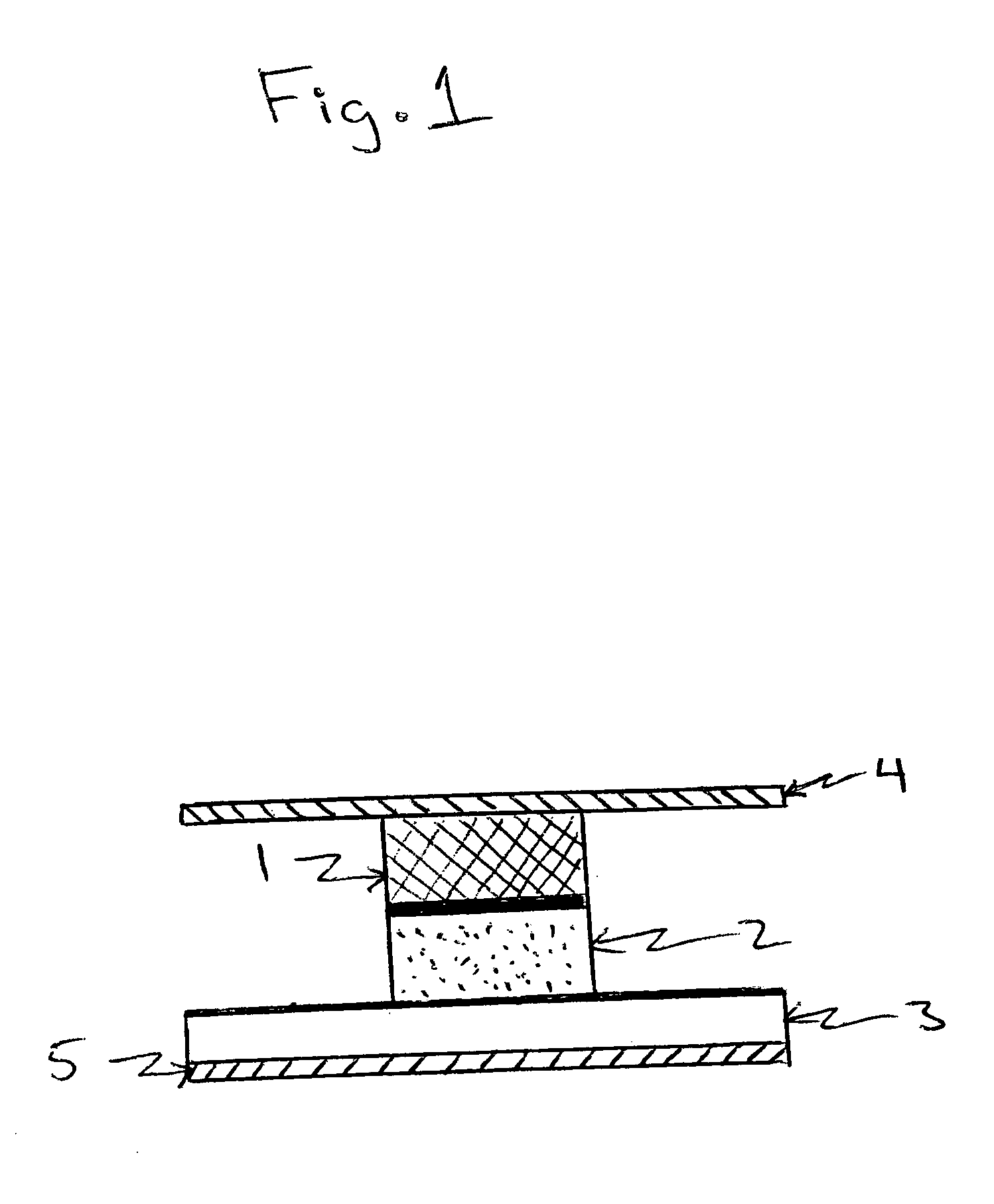Dry formulation for transcutaneous immunization
- Summary
- Abstract
- Description
- Claims
- Application Information
AI Technical Summary
Benefits of technology
Problems solved by technology
Method used
Image
Examples
example 1
[0154] Immunization of mice following topical application of lyophilized antigen, 160 .mu.g of cholera toxin, to the skin.
[0155] C57BL6 mice were immunized using cholera toxin (CT) in the following manner: 2 mg of lyophilized CT (List Biological, Campbell, Calif.) was carefuilly removed from the original vial, weighed on a piece of paper (1.28 mg recovered) and divided into eight approximately equal parts of 160 .mu.g each. Mice that were immunized with powder had 160 .mu.g of CT carefiully brushed off the paper onto the skin. The mice were anesthetized and shaved prior to immunization, and the immunizing powder was left on the skin for one hour, after which the mice were thoroughly washed. Pretreatment of the skin with water essentially involved wetting the skin for 5 minutes, blotting the skin dry, and placing the immunizing powder or solution on the skin. Mice immunized with liquid were immunized with 100 .mu.l of 1 mg / ml CT in saline. Antibodies were detected by ELISA, as descri...
example 2
[0157] Immunization of mice following topical application of lyophilized antigen, 50 .mu.g of cholera toxin, to the skin.
2 TABLE 2 anti-CT IgG (ELISA units) 14-day Ear tag # pretreatment antigen form prebleed titer geo mean 11707 none liquid <10 2271 251 11708 none liquid 327 11709 none liquid 247 11710 none liquid 286 11711 none liquid 19 11712 none powder <10 53 555 11713 none powder 1750 11714 none powder 954 11715 none powder 1731 11716 none powder 342 11717 H.sub.2O liquid <10 8645 11826 11718 H.sub.2O liquid 14958 11719 H.sub.2O liquid 13622 11720 H.sub.2O liquid 13448 11721 H.sub.2O liquid 9765 11722 H.sub.2O powder <10 4614 4487 11723 H.sub.2O powder 7451 11724 H.sub.2O powder 2536 11725 H.sub.2O powder 3580 11726 H.sub.2O powder 5823 11727 alc / H.sub.2O liquid <10 4656 7595 11728 alc / H.sub.2O liquid 8131 11729 alc / H.sub.2O liquid 3728 11730 alc / H.sub.2O liquid 11335 11731 alc / H.sub.2O liquid 15797 11732 alc / H.sub.2O powder <10 22100 7327 11733 alc / H.sub.2O powder 6607 11734 ...
example 3
[0160] Immunization of mice following topical application of lyophilized antigen, 25 .mu.g of cholera toxin, to the skin in intermediate responder mouse strain (BALB / c).
[0161] BALB / c mice were immunized using cholera toxin (CT) in the following manner. 5 mg of lyophilized CT (List Biological, Campbell, Calif.) was dissolved in 1 ml of sterile water to make a 5 mg / ml solution. For the powder immunization, 5 .mu.l of this solution was allowed to air dry at room temperature on a glass slide. The residual powder was then scraped off on the back of the mouse skin to be immunized. Thus, mice that were immunized with powder had 25 .mu.g of CT carefully brushed off the slide onto the skin. Mice that were immunized with the dry patch had a 1 cm.times.1 cm portion of a KIMWIPE tissue paper onto which 5 .mu.l of 5 mg / ml CT was placed on a 4 cm.times.4 cm square of plastic wrap (Saran) and allowed to air dry at room temperature. The tissue paper and plastic wrap were then placed with the tissue...
PUM
| Property | Measurement | Unit |
|---|---|---|
| Mass | aaaaa | aaaaa |
| Mass | aaaaa | aaaaa |
| Mass | aaaaa | aaaaa |
Abstract
Description
Claims
Application Information
 Login to View More
Login to View More - R&D
- Intellectual Property
- Life Sciences
- Materials
- Tech Scout
- Unparalleled Data Quality
- Higher Quality Content
- 60% Fewer Hallucinations
Browse by: Latest US Patents, China's latest patents, Technical Efficacy Thesaurus, Application Domain, Technology Topic, Popular Technical Reports.
© 2025 PatSnap. All rights reserved.Legal|Privacy policy|Modern Slavery Act Transparency Statement|Sitemap|About US| Contact US: help@patsnap.com

